Pyometra in Pets: Recognizing a Life-Threatening Uterine Infection
Some health emergencies in pets come on suddenly, like a broken bone or a seizure. Others develop quietly in the background, showing only subtle changes until the situation becomes dire. Pyometra falls into the second category. This dangerous uterine infection affects unspayed female dogs and cats, and by the time families realize something is wrong, their pet’s life may already be at risk.
Because pyometra advances rapidly, recognizing the signs and seeking immediate veterinary care can make the difference between life and death. At Creature Comforts Veterinary Service, our AAHA-accredited team is available 24/7 with advanced diagnostics and surgical expertise to treat this condition at any stage.
How Pyometra Develops
Pyometra is caused by infection in the uterus. It typically occurs in middle-aged to older females after repeated heat cycles. Hormonal shifts thicken the uterine lining and create an environment where bacteria can thrive.
There are two main forms:
- Open pyometra: The cervix remains open, allowing pus to drain through the vagina. Owners may notice foul-smelling discharge. While this looks alarming, it at least signals that infection is exiting. However, an open pyometra may close unexpectedly, trapping infection inside.
- Closed pyometra: The cervix stays sealed, and infection accumulates in the uterus. This is often more dangerous because there is no visible discharge, and signs may only appear once the pet is critically ill.
Cats are not immune. Although less common than in dogs, pyometra in cats is equally severe. Because cats often mask their symptoms, infections are sometimes advanced by the time families recognize a problem.
Stump pyometra is an uncommon complication that may develop in spayed pets when a small remnant of uterine or ovarian tissue is left behind. Because this tissue continues to react to hormones, it can become infected just like a full uterus. The signs mirror those of typical pyometra, and treatment still requires surgery to remove the infected tissue.
Warning Signs Every Owner Should Know
Pyometra doesn’t always appear with dramatic signs at the start. Many pets seem only slightly “off,” which is why families sometimes overlook the early indicators. Symptoms to watch for include:
- Vaginal discharge, often foul-smelling, in cases of open pyometra
- Loss of appetite or refusal to eat
- Repeated vomiting or episodes of diarrhea
- Fever, shaking, or general weakness
- Drinking and urinating more than usual, particularly in dogs
- A swollen or tender abdomen
- Persistent fatigue or low energy
Cats tend to be more subtle, sometimes hiding more than usual, grooming less, or acting restless. Spayed pets with stump pyometra can develop nearly identical signs, which makes it important not to ignore these changes.
Why Pyometra Is a Veterinary Emergency
Pyometra is not a condition that improves with rest or home care. Left untreated, the infection can lead to:
- Septicemia: bacteria spreading into the bloodstream
- Kidney failure: toxins overwhelming organ function
- Uterine rupture: pus spilling into the abdomen when the uterus becomes too full of infection
- Multi-organ failure: the body shutting down due to the circulating toxins
AAHA guidelines emphasize that pyometra is always an emergency. Pets can deteriorate rapidly, sometimes in a matter of hours. Stump pyometra carries the same urgency because infected tissue can rupture or poison the bloodstream just as quickly.
Why Surgery Is the Only Solution
Families often ask if antibiotics alone can resolve pyometra. Unfortunately, the answer is no.
- Open pyometra: antibiotics may ease infection temporarily, but it will always return.
- Closed pyometra: antibiotics cannot penetrate the sealed uterus, leaving bacteria untouched.
- Stump pyometra: medication may mask signs briefly, but the infection persists until surgery.
The only cure is emergency surgery– an ovariohysterectomy (removal of the uterus and ovaries), or in the case of stump pyometra, surgical removal of infected tissue.
Because the uterus is enlarged, fragile, and infected, pyometra surgery is far more complicated than a routine spay. At Creature Comforts, our surgical team works with advanced diagnostics to stabilize pets before, during, and after surgery.
Supportive care typically involves several important steps to keep pets stable before, during, and after surgery:
- IV fluid therapy helps sustain normal hydration and blood pressure.
- Comprehensive blood testing is used to check kidney and liver function and detect hidden complications.
- Targeted antibiotics are administered to control bacterial infection.
- Pain management and continuous monitoring ensure comfort and safety throughout recovery.
Dangers of Delaying Treatment
With pyometra, time is critical. Delaying treatment makes complications far more likely, including:
- Progression of sepsis, which can quickly lead to life-threatening shock
- Toxin buildup that strains or permanently damages the kidneys
- The uterus rupturing, releasing infection into the abdominal cavity
- A more difficult, higher-risk surgery with reduced chances of success
Even if antibiotics appear to calm symptoms for a short while, the infection always lingers and almost always comes back stronger. Immediate surgery provides the best chance for survival and a smoother recovery.
Prevention Through Spaying
The most reliable way to protect pets from pyometra is through spaying. Spaying eliminates the uterus and ovaries, preventing infection entirely. Additional health benefits include:
- Elimination of ovarian cancer
- Major reduction in risk of mammary cancer
- Increased longevity, supported by the ASPCA
Our wellness and preventative services include reproductive health counseling, helping families make the best decisions for their pets. Skilled surgical technique also reduces the risk of rare complications like stump pyometra.
What to Expect After Surgery
Recovery from pyometra surgery requires close monitoring and extra care compared to a routine spay.
- Pets must wear an Elizabethan collar to prevent licking. Tips for making the cone more comfortable can help pets who truly hate the cone.
- Follow-up visits confirm healing and allow for early detection of complications.
- With rest and medication, most pets regain full health within weeks.
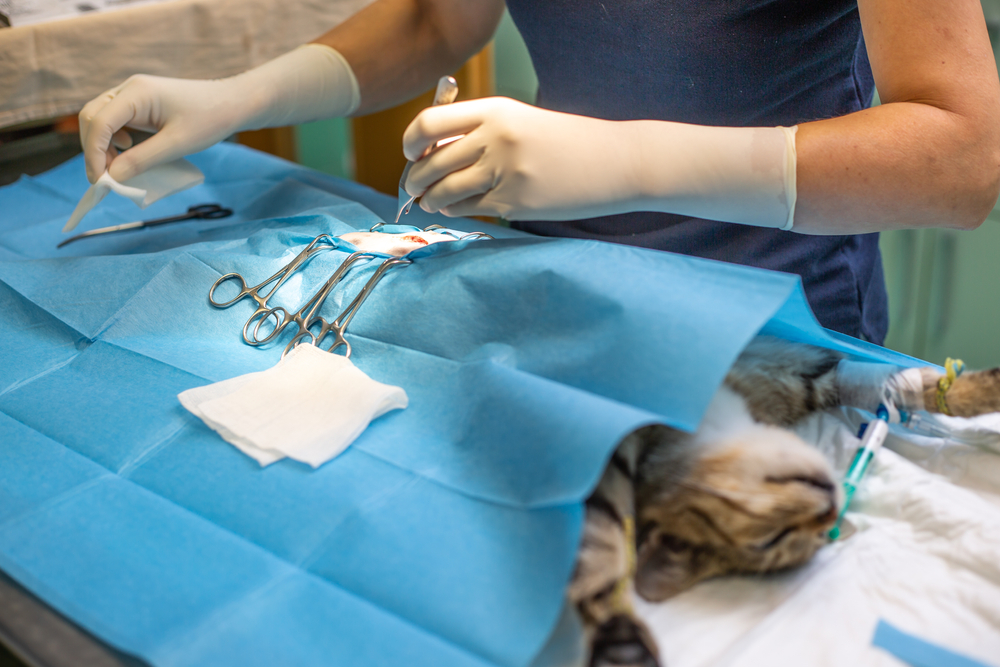
When to Call for Help
Contact a veterinarian right away if your female dog or cat develops any of the following warning signs:
- A swollen belly or signs of abdominal discomfort
- Persistent vomiting or drinking and urinating more than usual
- Unusual vaginal discharge, particularly after a heat cycle
- Extreme tiredness or refusal to eat
Since stump pyometra can occur in spayed pets, the same symptoms should never be ignored in animals that have already had spay surgery. Prompt evaluation is always the safest choice.
Creature Comforts Veterinary Service here for you. We provide emergency care 24/7. Calling ahead allows our team to prepare for your pet’s arrival and begin treatment without delay.
Rapid Response Saves Lives
Pyometra is one of the most dangerous reproductive conditions in pets. It is preventable through spaying, but once it develops, only surgery can save a pet’s life. Quick recognition and immediate treatment are critical to recovery.
Creature Comforts Veterinary Service is here around the clock with advanced diagnostics, surgical expertise, and the compassion of an AAHA-accredited team. If your dog or cat shows concerning signs, call us right away at 570-992-0400. Acting quickly may make all the difference.


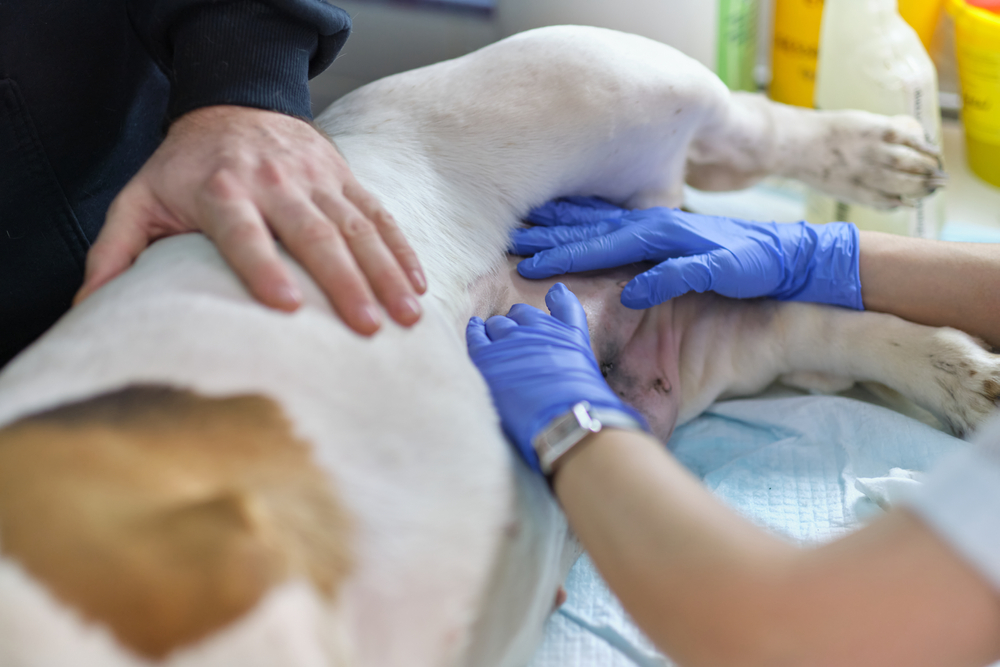

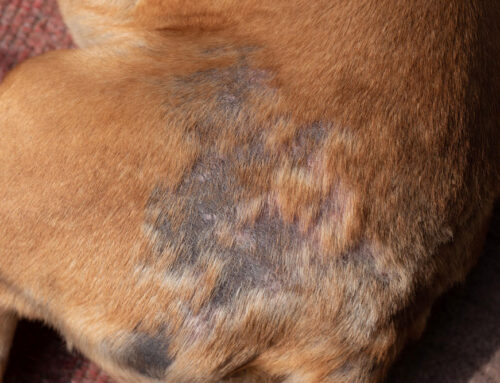
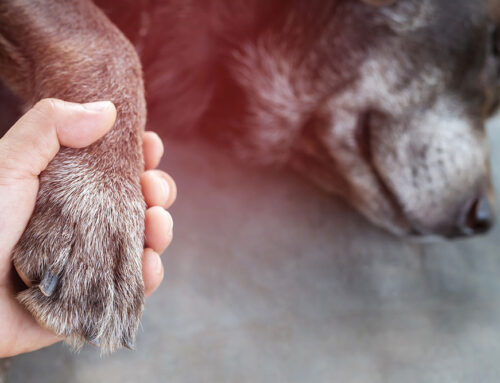
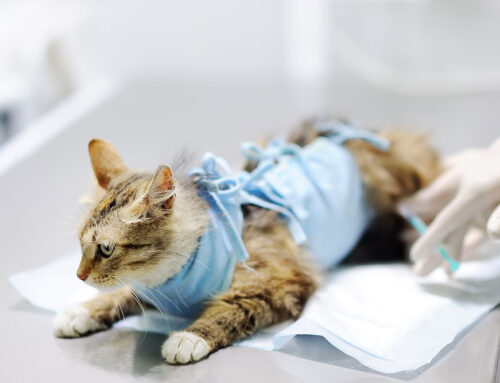
Leave A Comment